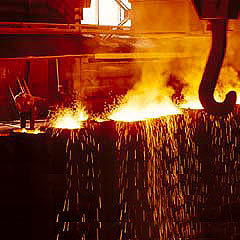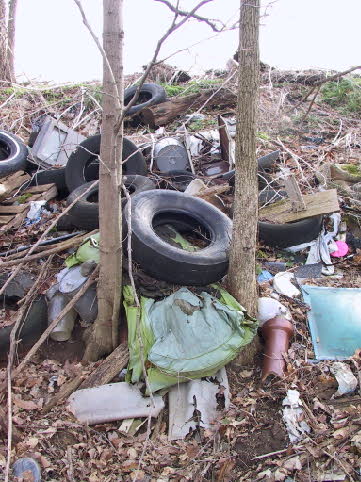Did the Supreme Court’s 2009 BNSF Decision Change CERCLA Cost-Recovery Practice?
By admin on November 27, 2012
The U.S. Supreme Court’s decision in Burlington Northern Santa Fe Railway Co. v. United States, 129 S. Ct. 1870 (2009), examined two unsettled areas of CERCLA: (1) the proof necessary to establish whether a PRP has “arranged for the disposal or treatment… of hazardous substances…”; and (2) CERCLA apportionment, i.e., whether a PRP is jointly and severally liable for an entire site, or rather only severally liable for a portion of the site. 
In an article on Lexology titled, “Four Years Later: How Has BNSF Changed CERCLA Practice?”, posted on November 20, 2012, Anthony G. Hopp and Colin O’Donovan of Edwards Wildman and Paul S. Kline of Three Rivers Management, Inc., explore the ramifications of the BNSF decision.
In summary, the authors conclude that the Supreme Court’s decision has made it more difficult to establish “arranger” liability by tightening the proof requirements. At the same time, however, most trial courts in the post-BNSF era have failed to embrace that portion of the decision dealing with “divisibility.” This article, which provides an excellent survey of CERCLA jurisprudence, is required reading for lawyers involved in cost recovery litigation.
The BNSF facts are straightforward. B&B operated an agricultural chemical distribution business that purchased pesticides and other chemicals from Shell Oil Company. Shell’s products arrived in tanker trucks and were transferred to storage facilities. Leaks and spills were apparently “common place” during B&B’s handling and transferring of Shell’s products. B&B eventually became insolvent and the Government sought cleanup costs from Shell as an “arranger” under § 9607(a)(3) of CERCLA. The Ninth Circuit affirmed the trial court’s ruling that Shell was liable as an “arranger.”
The Supreme Court reversed the Ninth Circuit, holding that a PRP is an arranger only when it takes intentional steps to dispose of a hazardous substance. The Court found that “Shell’s mere knowledge that spills and leaks continued to occur is insufficient grounds for concluding that Shell ‘arranged for… disposal…’.” and that the evidence at trial did not support the inference that Shell intended such spills. In so holding, the Court effectively overruled twenty years of “arranger” jurisprudence, which had created a much more liberal standard for establishing liability. Therefore, defendants that sell useful products and/or have no role in the actual spill are more likely to find BNSF helpful in avoiding CERCLA liability.
The second half of the BNSF decision was devoted to apportionment. As the authors observe, apportionment is different from allocation in that apportionment deals with whether a defendant is jointly and severally liable for an entire site, or rather only severally liable for a portion of the site. Allocation, by contrast, deals with how courts calculate a defendant’s share of liability after it has been determined that the defendant is, in fact, jointly and severally liable.
 In Yankee Gas Servs. Co. v. UGI Utils., Inc., No. 10-cv-580, 2012 WL 1067644 (D.Conn. March 30, 2012), the district court analogized the distinction between apportioning and allocating costs to several guests splitting a dinner check. “To apportion is to request separate checks, with each party paying only for its own meal. To allocate is to take an unitemized bill and ask everyone to pay what is fair.”
In Yankee Gas Servs. Co. v. UGI Utils., Inc., No. 10-cv-580, 2012 WL 1067644 (D.Conn. March 30, 2012), the district court analogized the distinction between apportioning and allocating costs to several guests splitting a dinner check. “To apportion is to request separate checks, with each party paying only for its own meal. To allocate is to take an unitemized bill and ask everyone to pay what is fair.”
But does the Yankee Gas court’s analysis blur the line between apportionment and allocation? Yankee Gas suggests that § 107 defendants may be able to reduce their overall exposure by taking certain costs off the table – those which a PRP can demonstrate it did not cause. Following the court’s analogy, if the guests each ordered their own entrees and a few bottles of wine, everyone would pay for their own entrees and equitably split the wine, with those guests who did not drink paying only for their entrées. Yankee Gas, therefore, suggests that there may be some interplay between apportionment and allocation.
This debate is far from being merely academic. Only by demonstrating divisibility of harm is a cost recovery defendant able to defend against a joint and several liability finding. Many CERCLA courts have acknowledged that the universal starting point for the divisibility of harm analyses in CERCLA cases is §433(A) of the Restatement (Second) of Torts. But post-BNSF, the Restatement (Second) of Torts takes on new significance in the divisibility determination. Thus, trial courts are empowered to look beyond CERCLA case law to other federal decisions interpreting Section 433(A) to determine what showing is required to establish divisibility. 
Inasmuch as the Supreme Court has clarified the law with regard to allocation, the Edwards Wildman authors ask why not a single post-BNSF trial court has accepted this defense? Shortly after the issuance of BNSF, it was widely predicted that "divisibility" would emerge as the new frontier in CERCLA litigation. However, this has not yet occurred. As difficult as establishing a “divisibility” defense remains in the courts, the article provides excellent strategies for attempting to establish the defense.

 In a stinging decision, the
In a stinging decision, the  Guest Blogger
Guest Blogger  On February 24, 2010, the Second Circuit issued an important CERCLA contribution decision in
On February 24, 2010, the Second Circuit issued an important CERCLA contribution decision in  Virtually everyone believes that it is good public policy to encourage the recycling of old electronic products, including computers, cathode ray tubes, televisions, printers and portable music devices. Nearly 20 states have e-waste laws on the books. However, New York City recently enacted
Virtually everyone believes that it is good public policy to encourage the recycling of old electronic products, including computers, cathode ray tubes, televisions, printers and portable music devices. Nearly 20 states have e-waste laws on the books. However, New York City recently enacted  . The country club’s environmental consultants determined that Pitney Bowes was the source of the contamination, which Pitney Bowes denied, and that PCBs from the Pitney Bowes property had migrated by way of storm water and surface water runoff to Innis Arden. What no one could dispute was that the country club had not placed the PCBs on the golf course–it was what CERCLA characterizes as an "innocent landowner". On June 26, 2009, the federal district court in Connecticut dismissed Innis Arden’s complaint prior to trial and affirmed a prior sanctions award against the country club. Innis Arden Golf Club v. Pitney Bowes, Inc. et al. Case No. 3:06 cv 1352 (JBA), 2009 U.S. Dist. LEXIS 54135. Something had gone terribly wrong! But what?
. The country club’s environmental consultants determined that Pitney Bowes was the source of the contamination, which Pitney Bowes denied, and that PCBs from the Pitney Bowes property had migrated by way of storm water and surface water runoff to Innis Arden. What no one could dispute was that the country club had not placed the PCBs on the golf course–it was what CERCLA characterizes as an "innocent landowner". On June 26, 2009, the federal district court in Connecticut dismissed Innis Arden’s complaint prior to trial and affirmed a prior sanctions award against the country club. Innis Arden Golf Club v. Pitney Bowes, Inc. et al. Case No. 3:06 cv 1352 (JBA), 2009 U.S. Dist. LEXIS 54135. Something had gone terribly wrong! But what? On June 22, 2009, after an six-week bench trial in the U.S. District Court for the District of New Jersey, we achieved a resounding victory for our client, Reichhold Inc., in an environmental cost recovery litigation. Reichhold v. USMRC et al, 2009 U.S. Dist. LEXIS 52471. The case addressed claims relating to the cleanup of a contaminated chemical plant site formerly owned by Reichhold in Carteret, New Jersey along the Arthur Kill. The case was brought pursuant to the federal CERCLA and New Jersey Spill Act statutes, as well as a 1994 settlement agreement between the parties.
On June 22, 2009, after an six-week bench trial in the U.S. District Court for the District of New Jersey, we achieved a resounding victory for our client, Reichhold Inc., in an environmental cost recovery litigation. Reichhold v. USMRC et al, 2009 U.S. Dist. LEXIS 52471. The case addressed claims relating to the cleanup of a contaminated chemical plant site formerly owned by Reichhold in Carteret, New Jersey along the Arthur Kill. The case was brought pursuant to the federal CERCLA and New Jersey Spill Act statutes, as well as a 1994 settlement agreement between the parties. Larry Schnapf recently started a blog on
Larry Schnapf recently started a blog on  Nothing in §107(a)(4)(B) references “voluntary” cleanups, and nothing in that section restricts its application to “voluntary” cleanups or actors. Sections 107(a) and 113(f) of CERCLA allow private parties to recover expenses associated with cleaning up contaminated sites. Similarly, nothing in Atlantic Research and its progeny restricts the application of cost recovery actions under CERCLA §107(a)(4)(B) to “voluntary” cleanups. If that is the case, what is the basis for the contention that only PRPs that perform cleanups voluntarily are entitled to pursue §107 cost recovery claims?
Nothing in §107(a)(4)(B) references “voluntary” cleanups, and nothing in that section restricts its application to “voluntary” cleanups or actors. Sections 107(a) and 113(f) of CERCLA allow private parties to recover expenses associated with cleaning up contaminated sites. Similarly, nothing in Atlantic Research and its progeny restricts the application of cost recovery actions under CERCLA §107(a)(4)(B) to “voluntary” cleanups. If that is the case, what is the basis for the contention that only PRPs that perform cleanups voluntarily are entitled to pursue §107 cost recovery claims? In its precedent breaking decision in
In its precedent breaking decision in